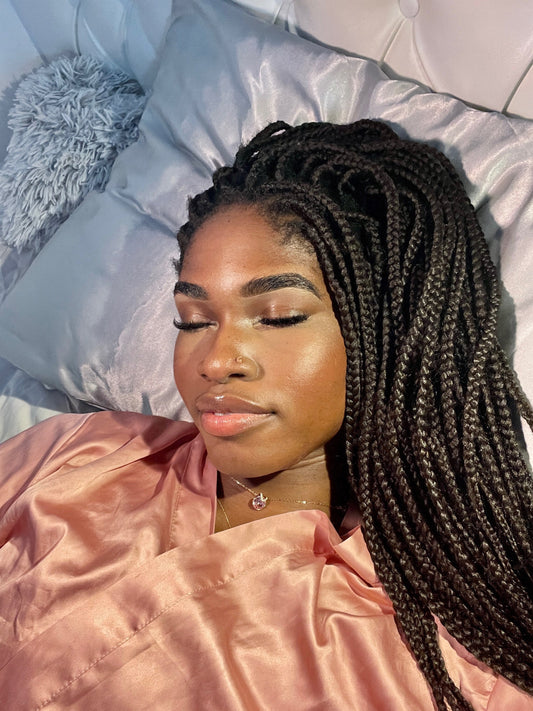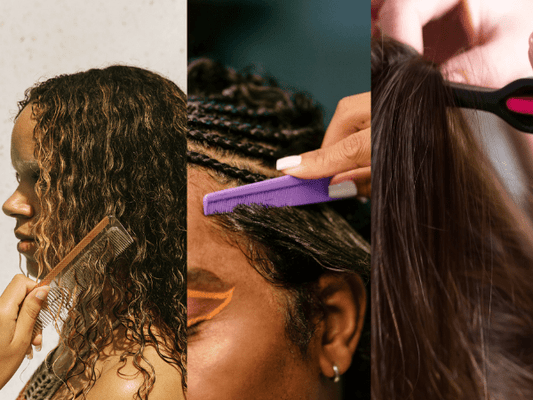Understanding Protein in Curly Hair Care
Protein plays a vital role in hair health, providing the strength necessary to prevent breakage and maintain elasticity. Curly hair, particularly susceptible to damage due to its structure, can benefit significantly from protein treatments. However, because curly hair is also prone to dryness, it's essential to strike a delicate balance between strengthening proteins and hydrating moisture.
Signs of Protein Overload
Recognizing protein overload is the first step in addressing it. Common signs include:
- Brittleness and Stiffness: Hair feels hard and inflexible, leading to breakage even with gentle handling.
- Lack of Elasticity: Curls lose their bounce and may not spring back when stretched.
- Dry, Straw-like Texture: Despite the use of moisturizing products, hair remains dry and rough to the touch.
- Tangled and Matted Strands: Excessive protein can cause hair strands to stick together, leading to tangles and matting.
Causes of Protein Overload
Protein overload often results from the overuse of protein-rich hair products or treatments. Many curly hair products contain protein to support hair strength and elasticity, but without proper balance, these products can contribute to overload. Additionally, using products with strong proteins (like keratin treatments) too frequently can exacerbate the issue.
Addressing Protein Overload
If you suspect your hair is experiencing protein overload, follow these steps to restore balance:
1. Pause Protein Treatments
Temporarily discontinue the use of protein-based shampoos, conditioners, and treatments. This includes products with hydrolyzed proteins, amino acids, and keratin among their top ingredients.
2. Increase Moisture Intake
Intensify your hair's moisture with deep conditioning treatments, hydrating masks, and leave-in conditioners. Look for ingredients like glycerin, aloe vera, honey, and natural oils (coconut, olive, argan) that are known for their moisturizing properties.
3. Clarify Gently
Use a clarifying shampoo to remove any buildup from protein-heavy products, but follow immediately with a deep conditioning treatment to prevent further dryness.
4. Incorporate Humectants
Humectants like glycerin and honey attract moisture from the environment into the hair. Including these in your routine can help rehydrate your curls.
5. Be Patient
Restoring balance after protein overload takes time. Be patient and consistent with your adjusted hair care routine, allowing your curls to gradually regain their moisture and elasticity.
Preventing Protein Overload
Prevention is key to avoiding the cycle of protein overload. Here are tips to maintain the right protein-moisture balance:
- Know Your Products: Read labels carefully to understand the protein content in your hair care products. Balance the use of protein treatments with moisturizing treatments.
- Listen to Your Hair: Pay attention to how your hair responds to different products and treatments. If you notice signs of stiffness or dryness after using a protein product, it may be time to scale back.
- Routine Evaluation: Regularly assess your hair's health and adjust your routine as needed. Your hair's needs can change with the seasons, diet, and overall health.
- Customize Your Care: Remember, everyone's hair is unique. Customize your hair care routine to suit your specific curl pattern, porosity, and hair health.
Conclusion
Navigating protein overload in curly hair requires understanding the delicate balance between strength and moisture that curls need to thrive. By recognizing the signs of protein overload and taking steps to restore moisture, you can ensure your curls remain healthy, elastic, and vibrant. Remember, the journey to perfect curls is a personal one, filled with learning and adjustments. With the right knowledge and care, you can maintain beautiful, balanced curls that showcase the natural beauty of your hair.











